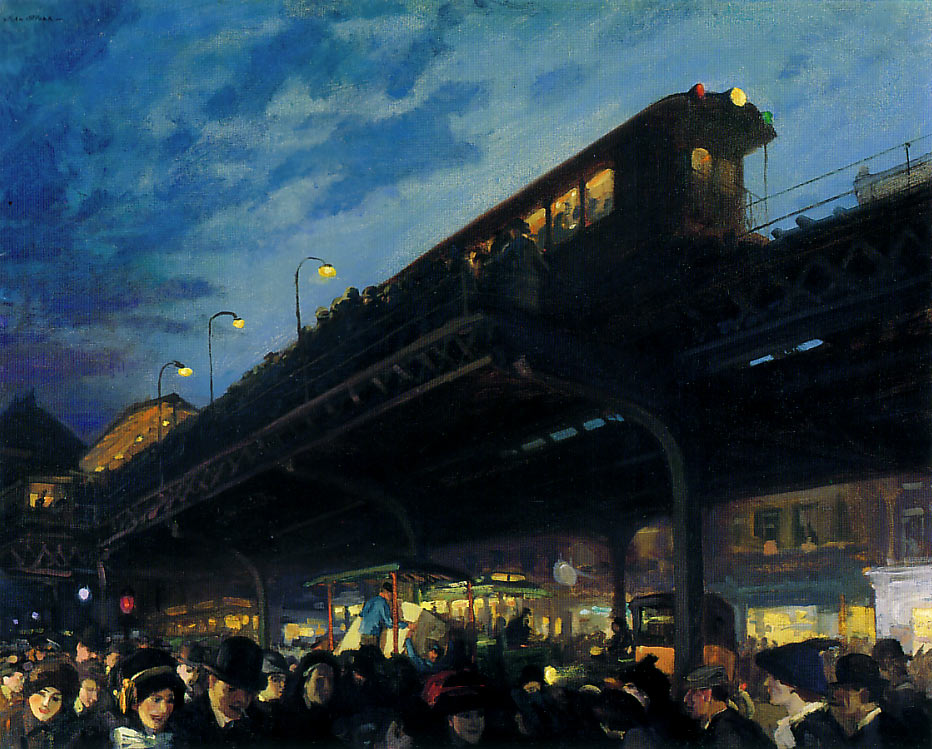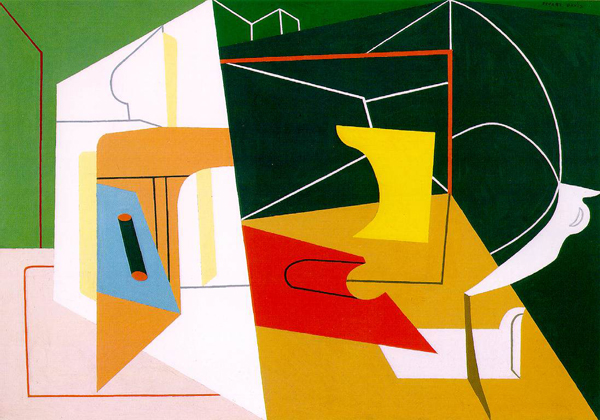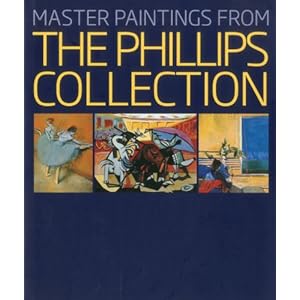Walt Kuhn (1877–1949) Plumes, 1931 Oil on canvas Acquired 1932, The Phillips Collection, Washington, D.C.
Georgia O’Keeffe (1887–1986) Pattern of Leaves, 1923 Oil on canvas © The Georgia O'Keeffe Foundation / Artists Rights Society (ARS), New York Acquired 1926, The Phillips Collection, Washington, D.C.
Winslow Homer (1836–1910) To the Rescue, 1886 Oil on canvas Acquired 1926, The Phillips Collection, Washington, D.C.
On October 6, 2012, the Amon Carter Museum of American Art will present To See as Artists See: American Art from The Phillips Collection, a landmark exhibition tracing American art from the 1890s to the 1960s. It will be the first time this impressive collection from the esteemed institution in Washington, D.C., has been organized into a large-scale, traveling exhibition. The show features 100 works by 63 artists, and the Amon Carter is one of only two U.S. museums to host the exhibition; (Frist Center for the Visual Arts (Nashville, Tennessee) February 2–May 6, 2012) previous touring cities include Madrid, Tokyo and Rovereto, Italy.
“This fall the Amon Carter will be the destination for what will surely be one of the most exceptional concentrations of American art ever to appear in North Texas,” says Andrew J. Walker, director of the Amon Carter. “Viewed alongside the Amon Carter’s collection, more than 200 preeminent American paintings from some of the greatest names in American art will be on view, free and open to the public through January 6, 2013. The opportunity to view the collections of these two institutions under one roof is unprecedented; it’s an exhibition not to miss.”
Founded by Duncan Phillips in 1918, The Phillips Collection opened to the public in 1921 as America’s first museum of modern art. Duncan Phillips acquired work that was personal yet connected to the great traditions of the past and present, according to Dorothy Kosinski, director of The Phillips Collection.
“He was one of the few collectors between the wars to champion America’s artistic diversity, collecting works by self-taught artists, artists of color, immigrants and naturalized Americans,” she says. “This early and steadfast commitment to American artists of fresh vision propelled The Phillips Collection as an essential force in American art.”
The paintings are arranged in 10 thematic groups: Romanticism and Realism (with works by Edward Hicks, George Inness, Winslow Homer, Thomas Eakins, Albert Pinkham Ryder); Impressionism (Childe Hassam, Ernest Lawson, John Henry Twachtman, William Merritt Chase, Maurice Prendergast); Forces in Nature (Marsden Hartley, Rockwell Kent, John Marin, Harold Weston); Nature and Abstraction (Arthur Dove, Hartley, Georgia O'Keeffe, Kent, Marin, Max Weber); Modern Life (Robert Henri, George Luks, Walt Kuhn, Edward Hopper, Guy Pene du Bois); The City (John Sloan, John Marin, Charles Sheeler, Ralston Crawford, Edward Hopper,); Memory and Identity (Grandma Moses, Yasuo Kuniyoshi, Jacob Lawrence, Horace Pippin, Rufino Tamayo); Legacy of Cubism (John Marin, Karl Knaths, Stuart Davis, John Graham, Ilya Bolotowsky); Transition to Abstract Expressionism (Morris Graves, Jackson Pollock, Milton Avery, Alexander Calder); and Abstract Expressionism (Adolf Gottlieb, Mark Rothko, Clyfford Still, Helen Frankenthaler, Robert Motherwell, Philip Guston).
The urban landscape figures prominently in the show as well with the work of Edward Hopper, Charles Sheeler and John Sloan. American scene painters, like Allan Rohan Crite, Yasuo Kuniyoshi and Jacob Lawrence, are represented in addition to landmark artists of Abstract Expressionism such as Richard Diebenkorn, Jackson Pollock and
Mark Rothko.
From http://www.leisahammett.com: (images added)
Throughout this exhibition, specific paintings are connected to inventions and innovations that changed the world. These include:
the Erie Canal (Arthur B. Davies, Along the Erie Canal, 1890);
the electric light bulb (John Sloan, Six O’Clock, Winter, 1912);
tube paint (Theodore Robinson: Giverny, ca. 1889)
and acrylic paint (Helen Frankenthaler, Canyon, 1965); skyscrapers (Edward Bruce, Power, ca. 1933);
the egg beater and electric fan (Stuart Davis, Egg Beater, No., 4, 1928)
“Duncan Phillips created a truly unique institution, carefully and cogently structuring within it one of the world’s great collections of American art,” says Rebecca Lawton, the Amon Carter’s curator of paintings and sculpture. “Today, what makes the collection so impressive, and what we take away from the experience of viewing this exhibition, is the astonishing breadth of Phillips’ vision. It encompassed not just the acknowledged heroes of the 19th century, the modernist masters and the giants of mid-20th-century painting, but also those artists who figure prominently with the modern tradition but whose works fall outside the conventional art historical ‘isms’.”
To See as Artists See: American Art from The Phillips Collection, was organized by The Phillips Collection, Washington, D.C. After its run in Fort Worth the exhibition returns home to The Phillips Collection for a special presentation in 2014. Additional information about The Phillips Collection is available at http://www.phillipscollection.org/.
Exhibition Catalog
A new publication featuring highlights of The Phillips Collection's holdings—and most of the works in this exhibition is entitled Master Paintings from The Phillips Collection. It includes essays by Eliza Rathbone and Susan Behrends Frank and texts on more than 100 pictures from the Collection.








